
It’s a new year, and that means it’s time to predict which artists will make their mark in 2024. Continuing our annual Artists To Watch campaign, we’ve expanded the list to feature even more artists across many more genres.
Along with streaming data, we tapped our North American music team and editors of our playlist brands—Viva Latino (Latin), Pop Rising (pop), Hot Country (country), juniper (folk), New Noise (rock), Lorem (indie), R&B Rising (R&B), Most Necessary (hip-hop), and mint (dance)—to help select the 90 rising talents featured below. You can also find all of our picks rounded up in one convenient spot with our brand-new Artists To Watch playlist.
You’ll find Musica Mexicana crooner Chino Pacas among Viva Latino’s picks, and introspective hitmaker Teddy Swims included in Pop Rising’s selections. Country and folk singer-songwriters MacKenzie Carpenter and Chance Peña made Hot Country and juniper’s cuts, respectively, while all-women rock band The Beaches and moody indie songstress Chappell Roan were tapped by New Noise and Lorem. Meanwhile, South African vocalist Tyla, Texas rapper That Mexican OT, and Greek electronic producer Argy were recognized by R&B Rising, Most Necessary, and mint, respectively.
Who else should you keep an eye on in 2024? Keep reading for the full list of Artists To Watch.
Viva Latino’s Artists To Watch
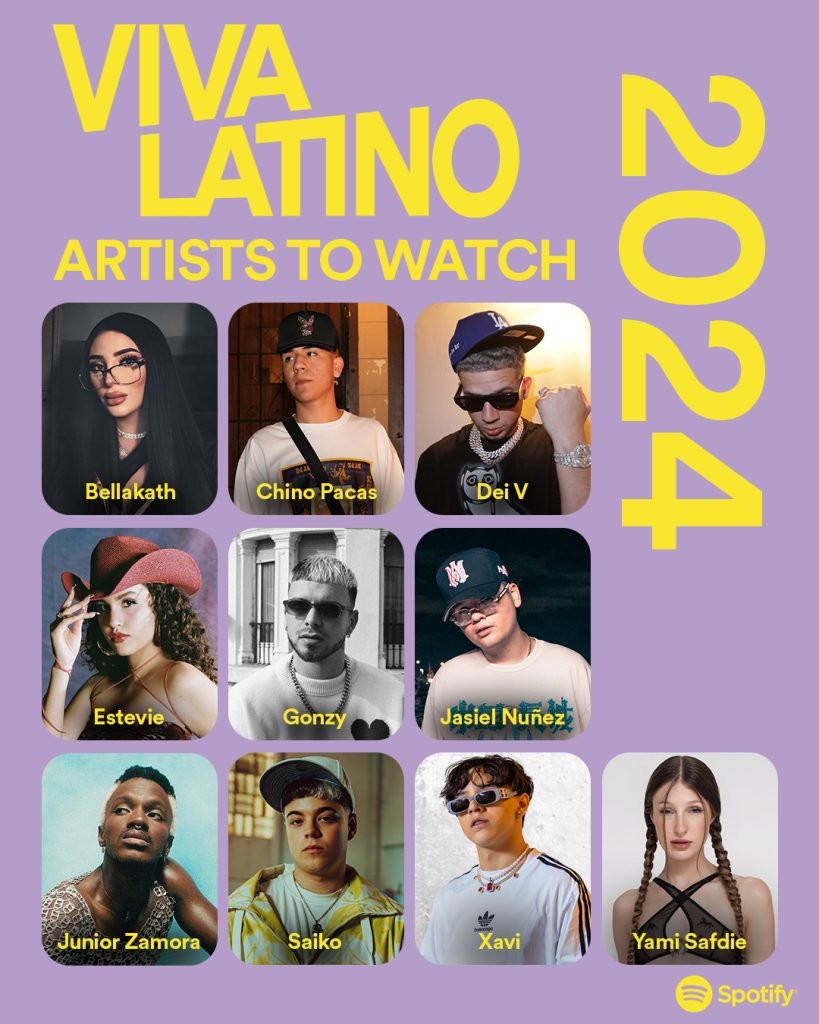
Bellakath
Chino Pacas
Dei V
Estevie
Gonzy
Jasiel Nuñez
Junior Zamora
Saiko
Xavi
Yami Safdie
Hot Country’s Artists To Watch
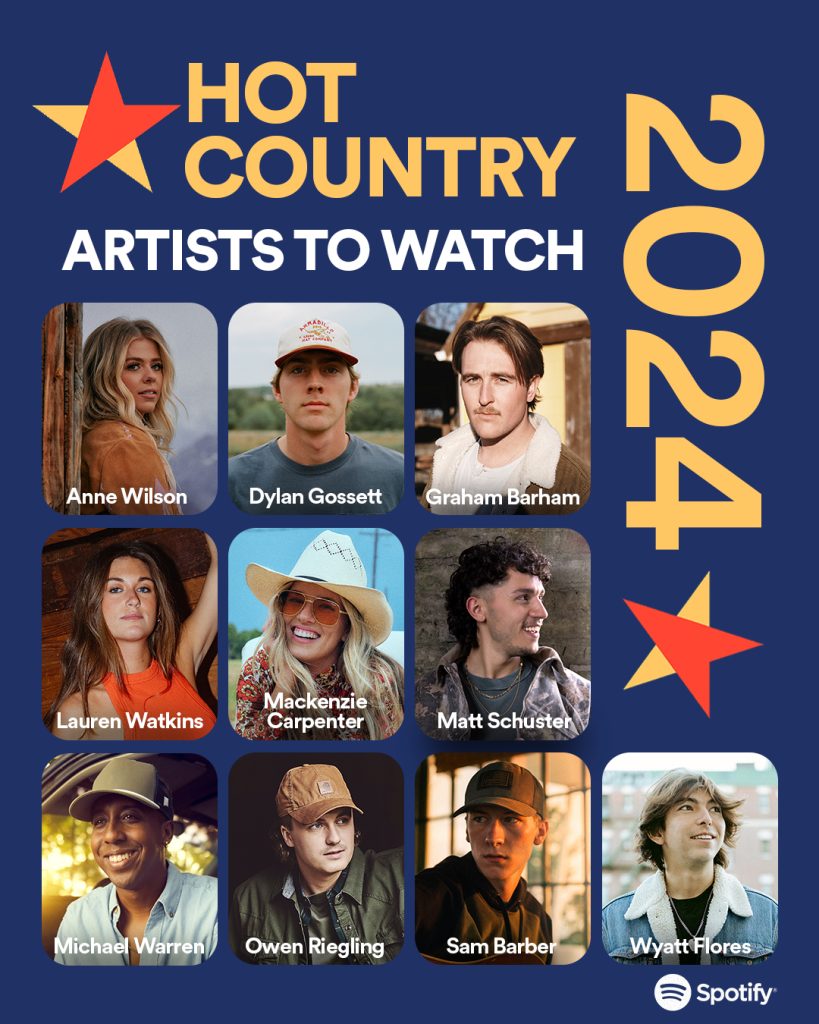
Anne Wilson
Dylan Gossett
Graham Barham
Lauren Watkins
Mackenzie Carpenter
Matt Schuster
Michael Warren
Owen Riegling
Sam Barber
Wyatt Flores
Pop Rising’s Artists To Watch
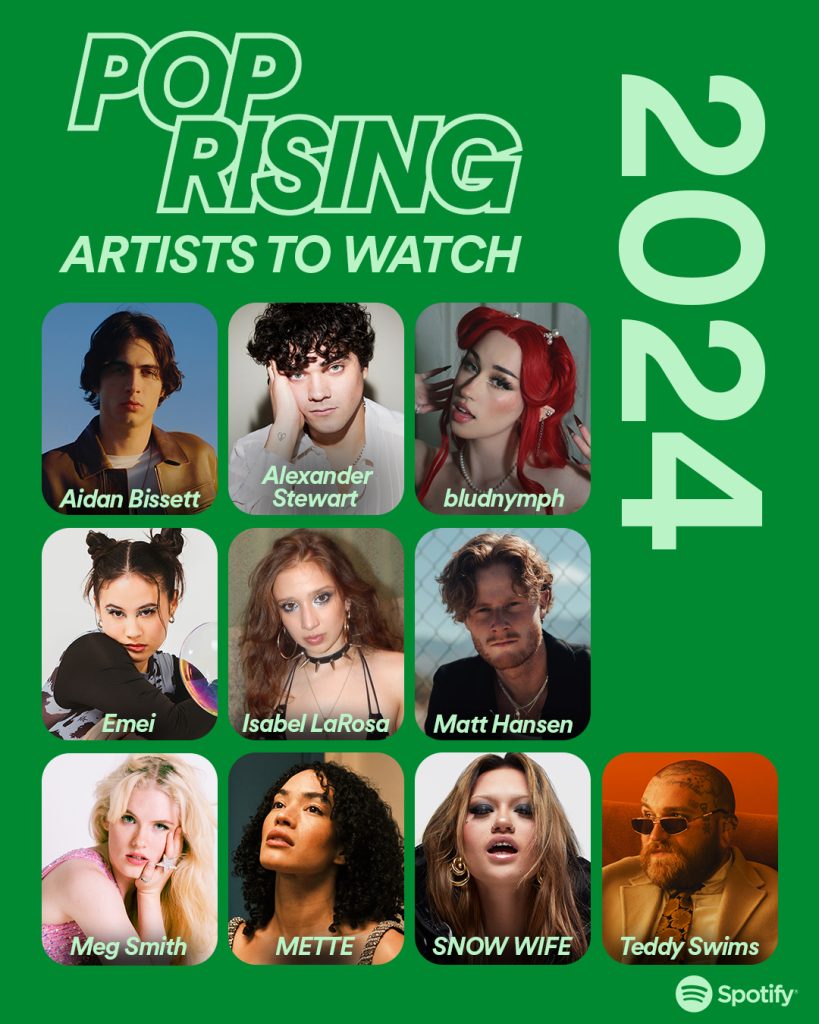
Aidan Bissett
Alexander Stewart
bludnymph
Emei
Isabel LaRosa
Matt Hansen
Meg Smith
METTE
SNOW WIFE
Teddy Swims
juniper’s Artists To Watch
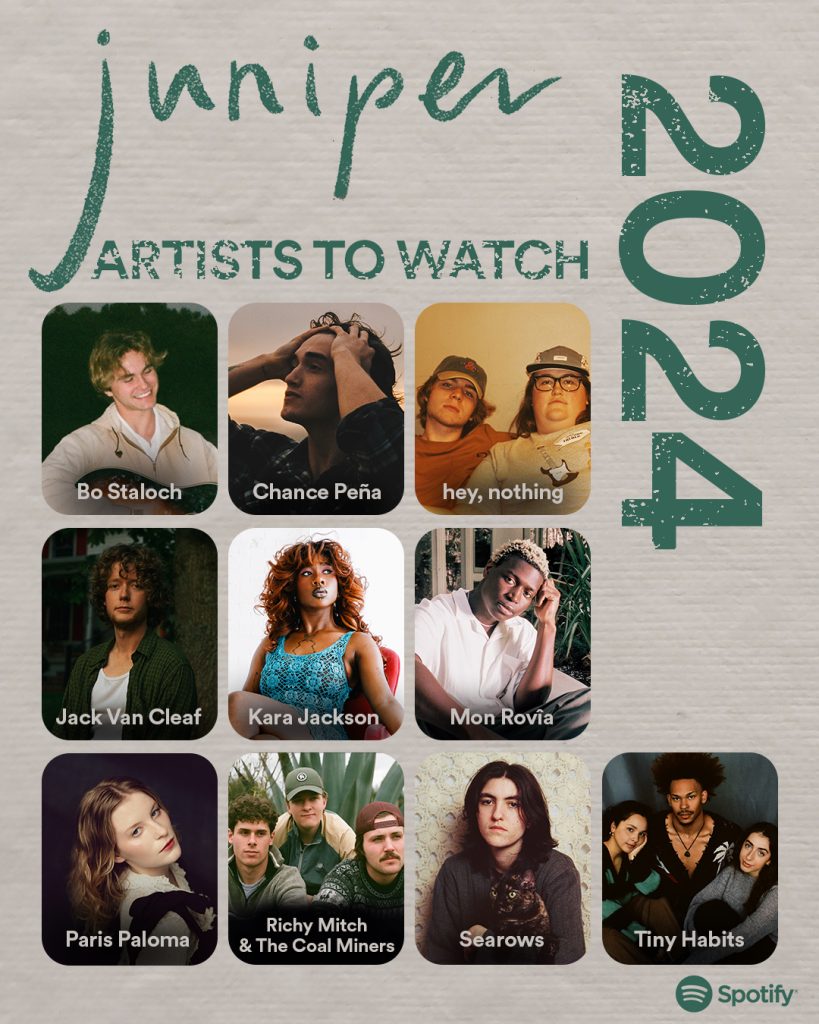
Bo Staloch
Chance Peña
hey, nothing
Jack Van Cleaf
Kara Jackson
Mon RovÎa
Paris Paloma
Richy Mitch & The Coal Miners
Searows
Tiny Habits
New Noise’s Artists To Watch
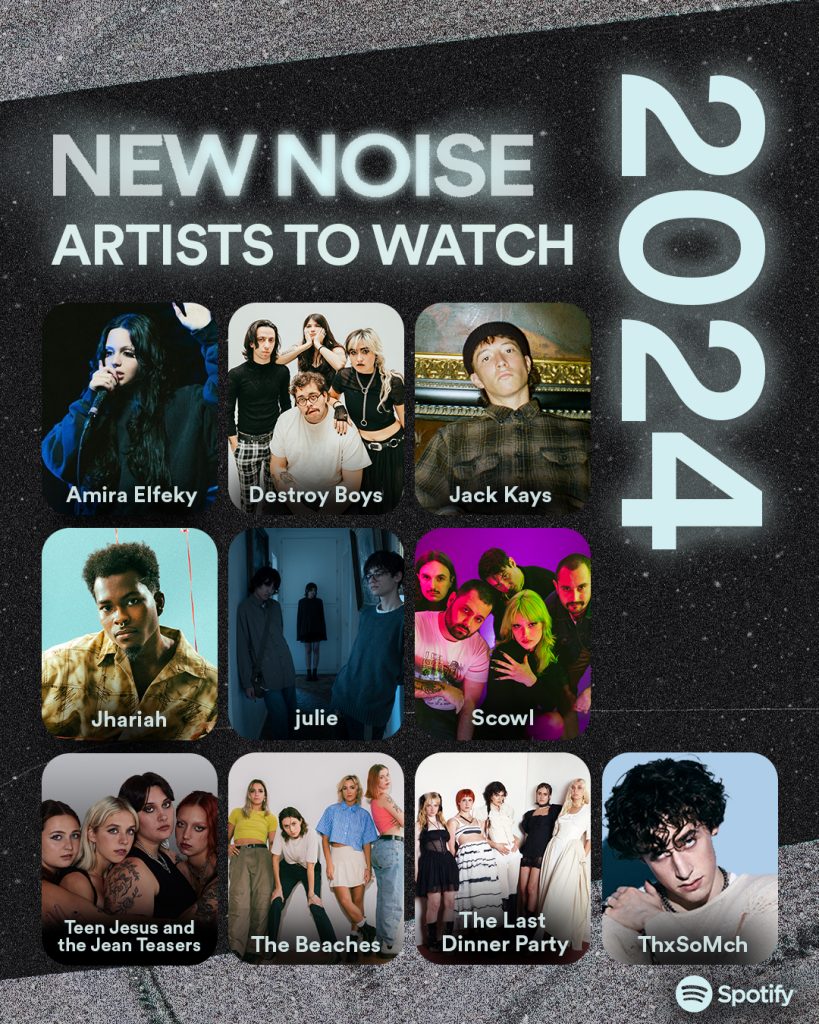
Amira Elfeky
Destroy Boys
Jack Kays
Jhariah
julie
Scowl
Teen Jesus and the Jean Teasers
The Beaches
The Last Dinner Party
ThxSoMch
R&B Rising’s Artists To Watch
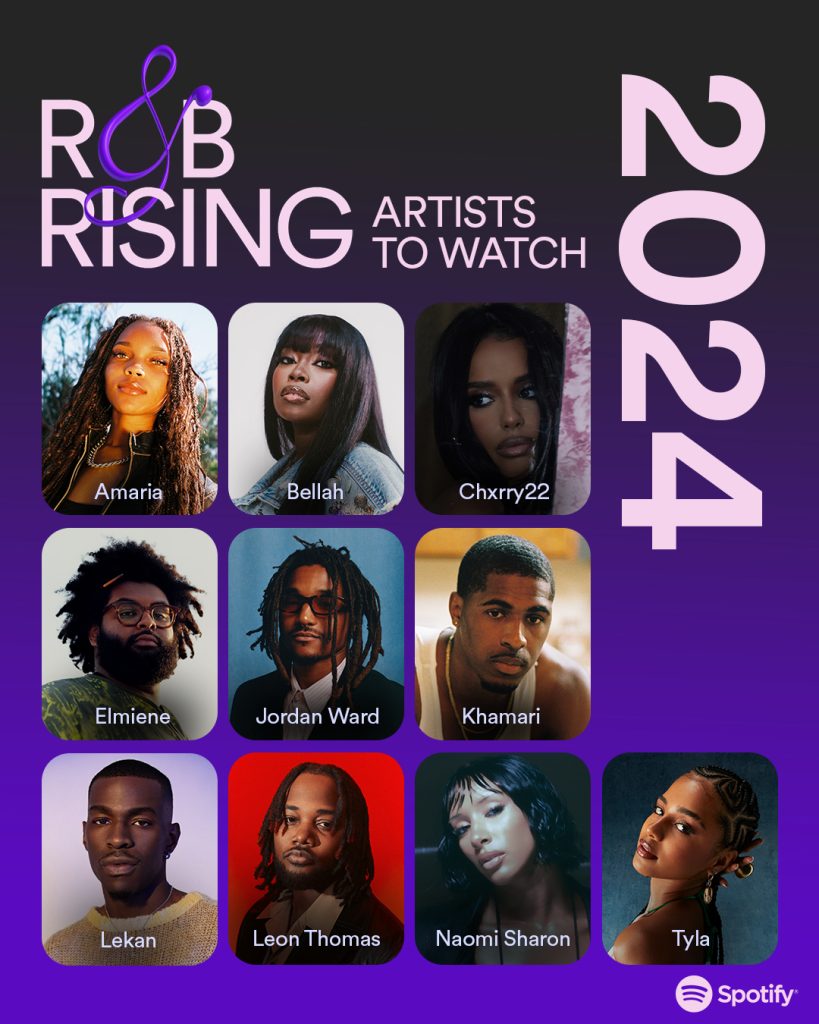
Amaria
Bellah
Chxrry22
Elmiene
Jordan Ward
Khamari
Lekan
Leon Thomas
Naomi Sharon
Tyla
mint’s Artists To Watch
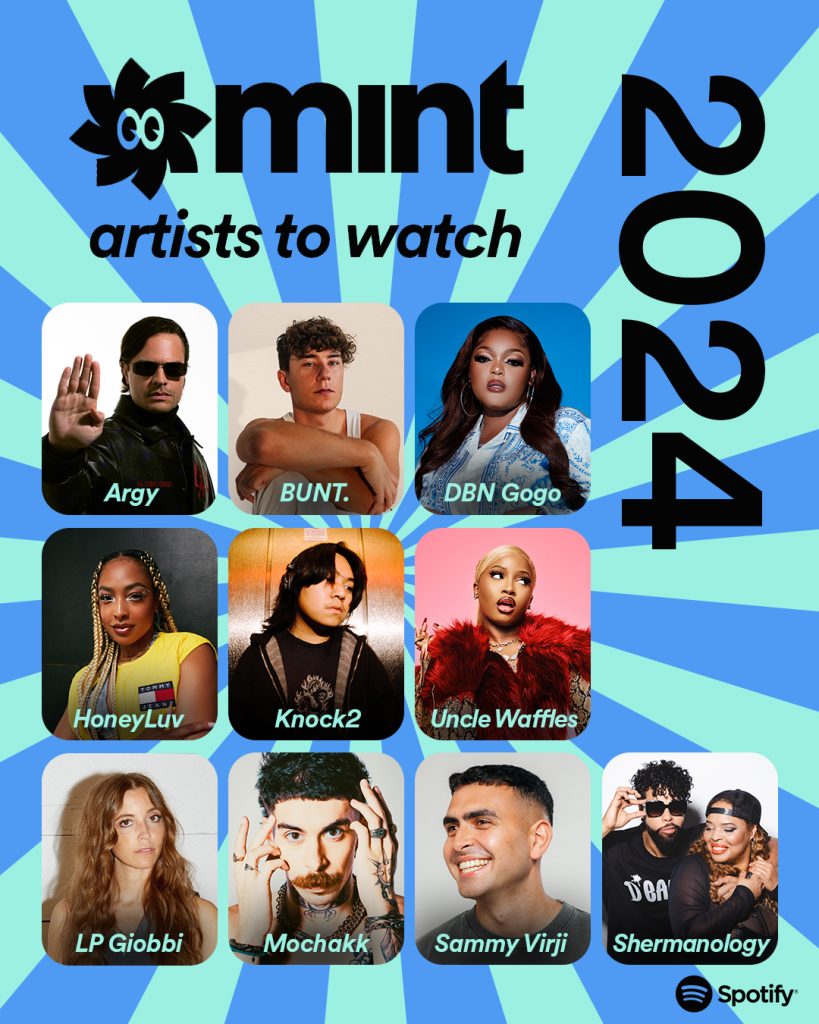
Argy
BUNT.
DBN Gogo
HoneyLuv
Knock2
LP Giobbi
Mochakk
Sammy Virji
Shermanology
Uncle Waffles
Lorem’s Artists To Watch
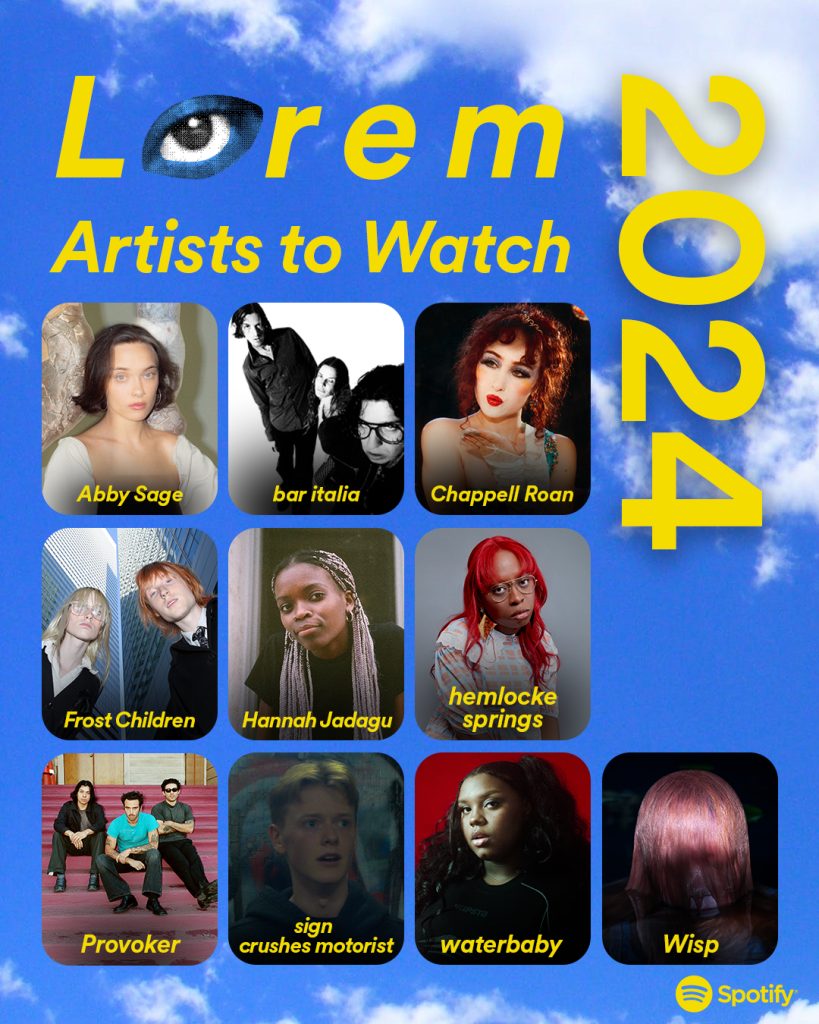
Abby Sage
bar italia
Chappell Roan
Frost Children
Hannah Jadagu
hemlocke springs
Provoker
sign crushes motorist
waterbaby
Wisp
Most Necessary’s Artists To Watch

310babii
41
BabyDrill
BigXthaPlug
Hunxho
Lay Bankz
ODUMODUBLVCK
Skilla Baby
That Mexican OT
Veeze
Press play on our Artists To Watch playlist to discover the sounds of all the artists we’re expecting to make waves in 2024.





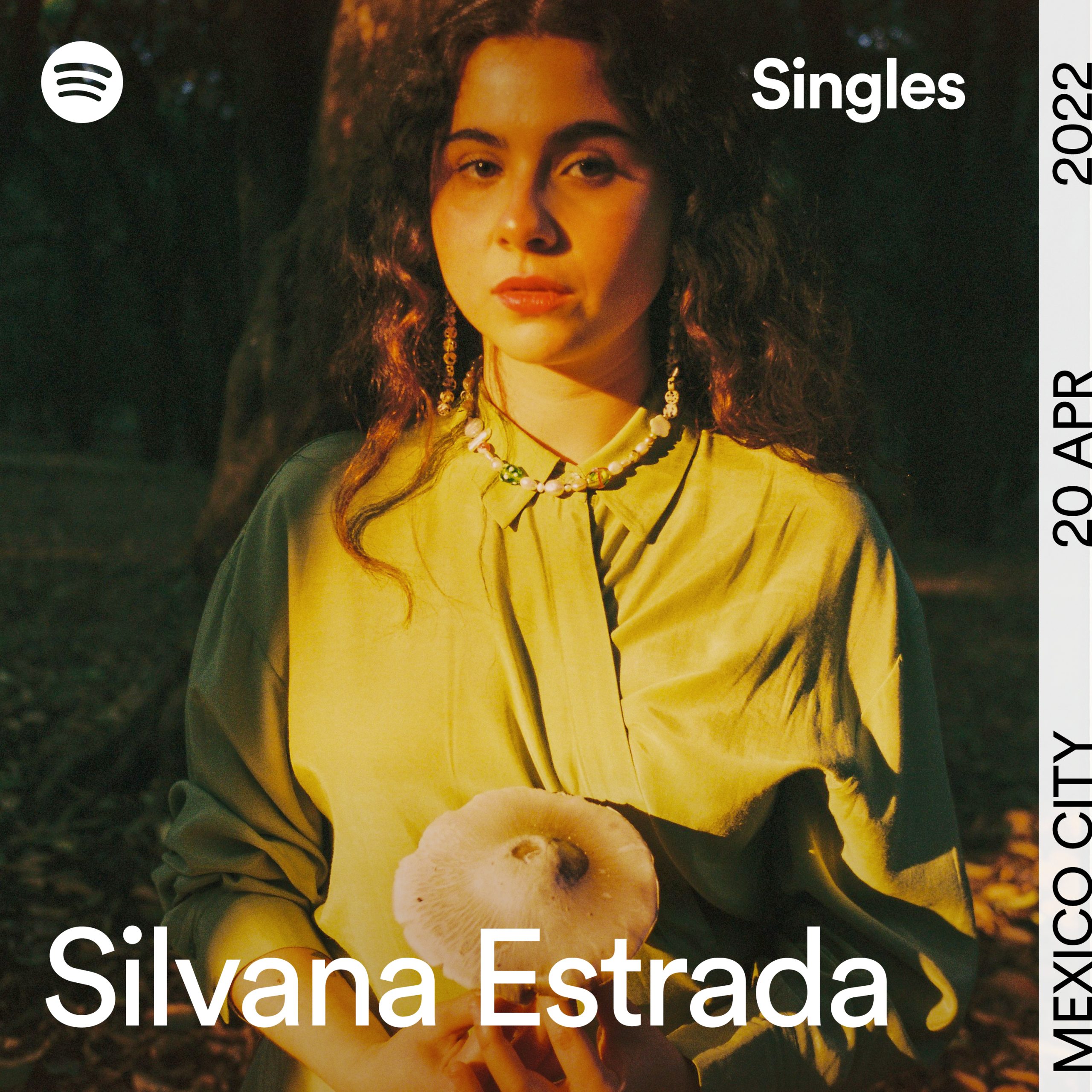
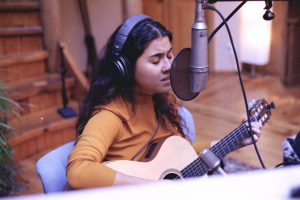
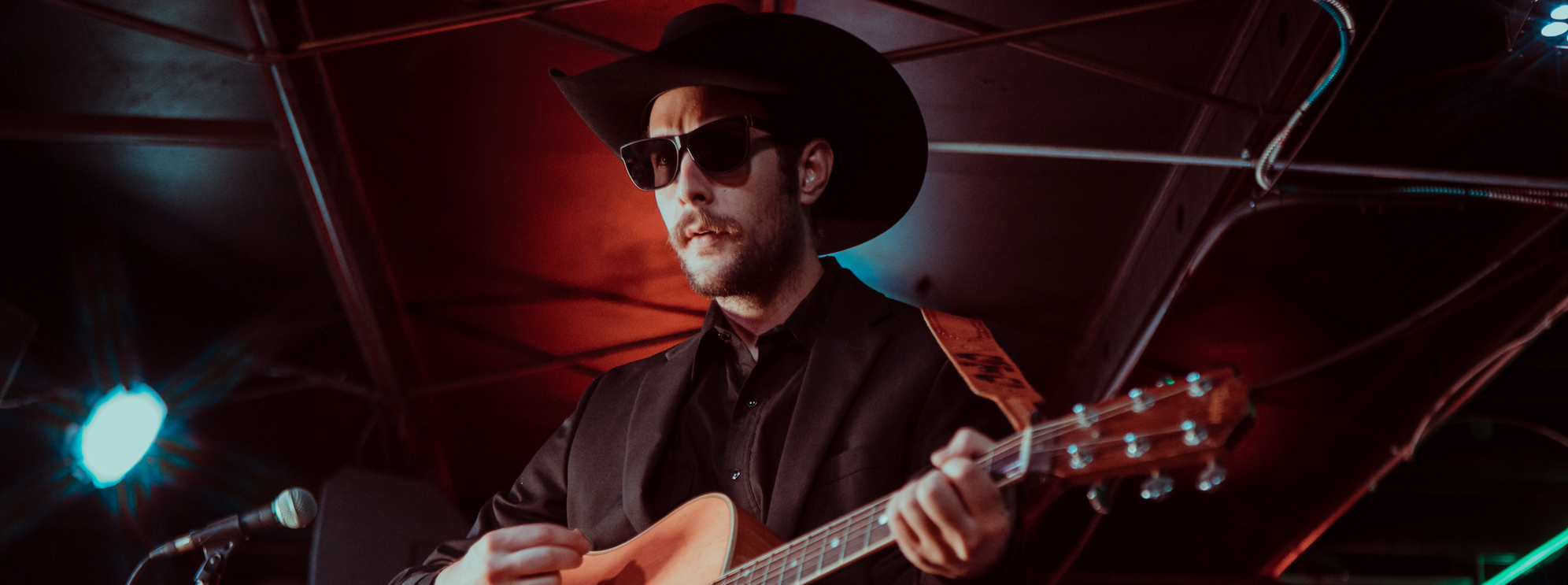
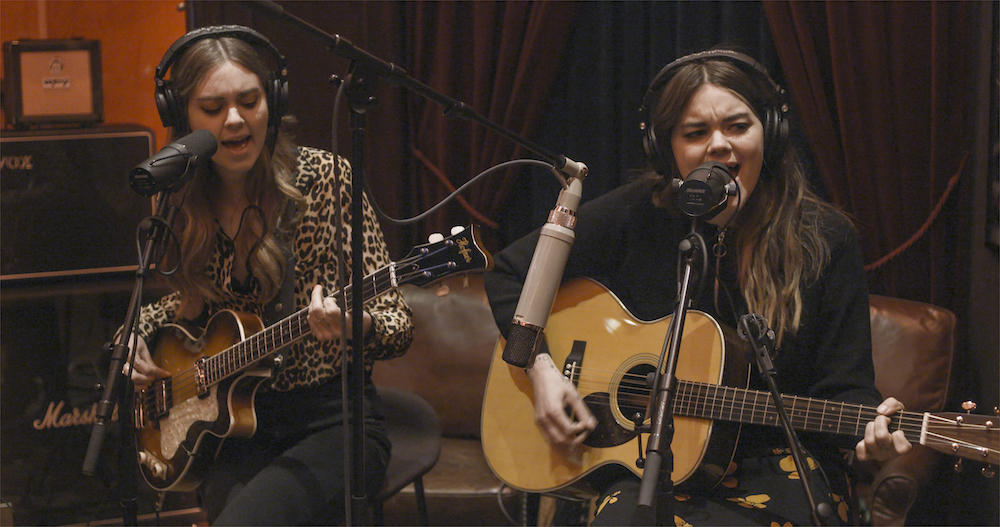



Recent Comments